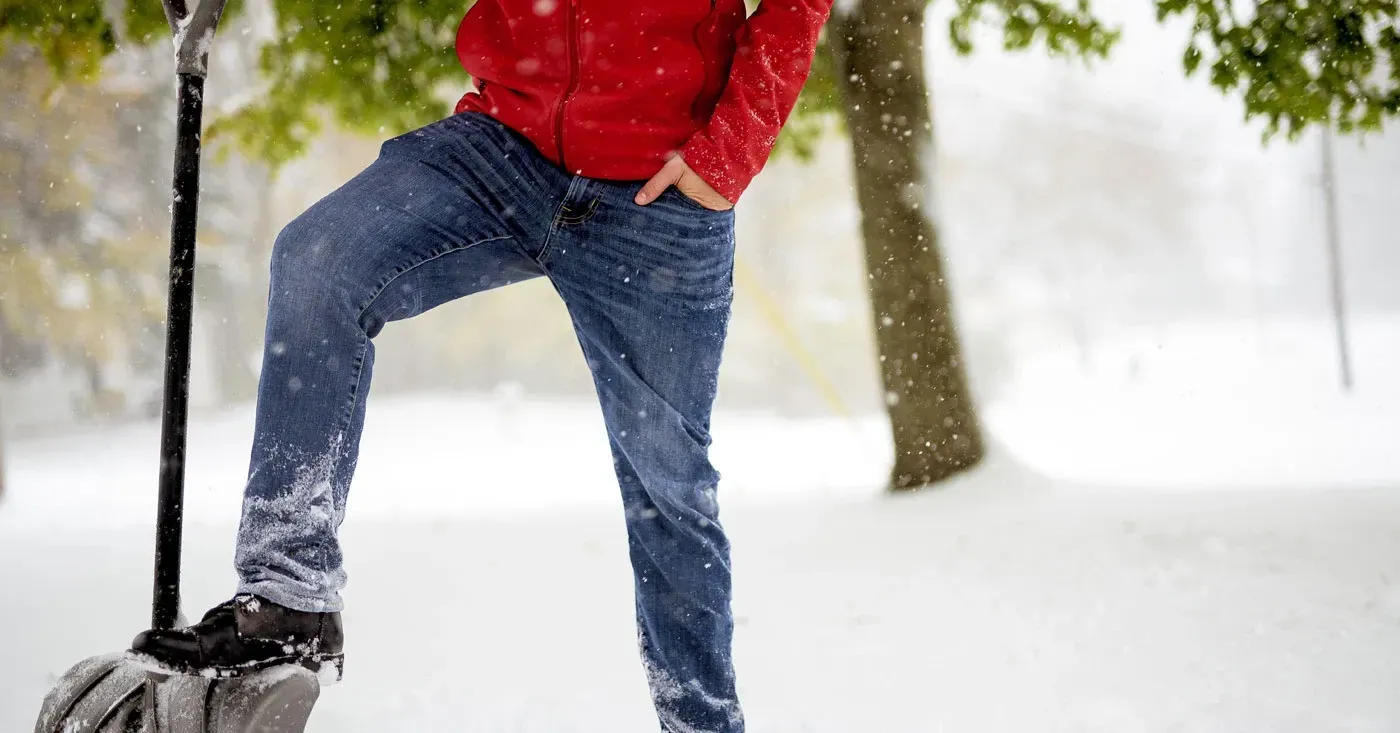The Best Ways to Remove Ice and Snow This Winter

Old Man Winter has arrived in Ohio. While we provide snow and ice removal services to our commercial clients, most homeowners choose to manage their own wintry weather effects. While our winters can be beautiful, they can also be inconvenient and, in some cases, dangerous. Read on to learn about how you can most effectively remove snow and ice accumulation from your patio, deck, driveway, stairs, and more.
Removing Snow and Ice From Your Pavers
If you have a paver patio, driveway, walkway, or another outdoor area, you might be concerned about how you can keep it free of snow and ice. The basic rules here are that you don’t want to do anything that will chip the pavers or cause cracking.
Shoveling is fine, but a plastic shovel is recommended. A heavy metal shovel can cause small chips on the edges of the pavers. The same theory goes for a snow plow. Make sure that you have a rubber blade on your plow. Also, if it’s been a while since your pavers were installed, make sure they are still level. If they aren’t, a snowplow can cause some damage.
It is fine to use a snowblower on your pavers. If the end of yours is metal, consider putting a plastic cover on it for the same reasons listed above.
Finally, you need to be careful with de-icing salts. You can use them, but it’s important to wash them away once the freeze is over. Salt is corrosive and can cause pitting or even cracking over time. Calcium magnesium acetate is an alternative to salt that you might consider. It is less corrosive and it won’t kill your plants in the spring. It’s also safe if your pet walks on it, which is not necessarily true for rock salt.
Removing Snow and Ice From Your Wooden Deck
If you have a wooden deck, you’ll want to try to keep it free from ice and snow to minimize slipperiness and, if it is unsealed, to protect it from water damage.
You can shovel your deck. Use a plastic shovel (because a metal shovel can damage the boards) and shovel in the same direction that the planks are laid. You don’t want to shovel “across the grain,” because you can easily nick a board if it is not perfectly level or if your shovel slips in between the grooves. If the snow is light, you can also use a broom to simply sweep it away. This is probably the least labor-intense option.
If you need to use something to melt ice, be aware that salt can erode your deck. You can still use it if you have to, but you should rinse it away as soon as feasible. Sand is less corrosive, but it can still be abrasive because of its rough texture, so that isn’t recommended.
Removing Snow and Ice From Your Concrete Driveway
If you are not lucky enough to have a radiant heat driveway, you will need to get outside and remove the snow and ice yourself. As with the other ground materials discussed so far, it’s best to use a plastic shovel if you are planning on shoveling it yourself. While a concrete driveway seems tough, a metal shovel can damage it.
You can use a snowblower to make quick work of your driveway, or you can plow it with your own plow or hire someone to remove the snow for you. The other alternative is to use salt or another chemical de-icer. The same caveats apply: Be sure to rinse it off of the surface of the driveway to prevent corrosion.
Tips To Prevent Snow and Ice Buildup
The best way to reduce the amount of time you spend wrestling with the elements is to prevent a lot of snow and ice from accumulating in the first place. Here are some tips for preventing a lot of slippery buildup:
Shovel often and early. During a storm, as long as it is safe to do so, go out every couple of hours to remove the snow from your outdoor surfaces. You can use a broom if the snow is light. Otherwise, use a plastic shovel.
Use de-icer. Sprinkling or spraying de-icer on your stairs can help keep them safe to step on. Go out and break up any ice that freezes frequently.
Sprinkle sand on non-wood surfaces. You can use sand to improve traction. Note that sand will not melt ice. It will only make it less slippery.
Don’t use kitty litter. You might read or hear the tip to sprinkle kitty litter on ice to increase traction. It’s best not to do this, because it will be messy once the snow melts later. Sand will sweep away easily, but kitty litter will not.
Wait it out. If it is very icy out to the point that it is unsafe, you might simply need to wait it out for a while. Don’t put yourself at risk if you don’t have to.
If you want to talk about landscaping or hardscaping services in Ohio, contact Omni Pools & Scapes. We can help you assess your needs and come up with a plan that will help you achieve the outdoor living space of your dreams.
OMNI LEARNING CENTER
RECENT POSTS



